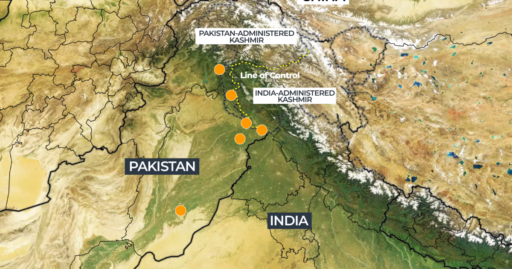
New Delhi, May 2025 – India launched Operation Sindoor in early May 2025, a precision military campaign targeting terrorist infrastructure in Pakistan and Pakistan‑administered Kashmir. The strikes were a calibrated response to the horrific Pahalgam terror attack on April 22, which claimed the lives of 26 tourists. Over the course of four days, the operation reshaped the strategic calculus between India and Pakistan.
Across the nation, the events unfolded rapidly—with missile barrages, drone interceptions, political debates, and widespread public response all forming a narrative that went far beyond a standard military action.
How the Operation Played Out
On May 6, India initiated missile strikes on nine terror camps linked to Jaish-e-Mohammed, Lashkar-e-Taiba, and Hizbul Mujahideen. Targets included sites in Bahawalpur, Muridke, Sialkot, and Muzaffarabad. Attack timing was meticulously planned between Muslim prayer times to avoid civilian casualties.
The strikes—carried out by the Indian Air Force using indigenous systems such as BrahMos, Astra, Akash missiles, drones, and Tejas fighters—lasted just 23 minutes. Indian officials estimate that over 100 terrorists were neutralized, while civilian casualties were minimal and limited to Pakistani media claims.
Digital Fallout and Cyber Retaliation
Operation Sindoor also triggered a wave of cyberattacks. A teenage hacker from Gujarat reportedly orchestrated DDoS attacks on Indian government websites via the Telegram-linked group “AnonSec”—highlighting the multi-domain nature of modern conflict.
Government agencies quickly traced the digital breach and apprehended the youth, underlining that national security now stretches from battlefields to broadband backdoors.
Diplomatic Murray and Political Backlash
India mobilized eight MP-led delegations to brief global capitals on the Pahalgam incident and Operation Sindoor. Officials emphasized that the strikes were surgical, strategic, and justified under counter-terror norms.
Back home, the Lok Sabha and Rajya Sabha held 16-hour debates on national security. Defence Minister Rajnath Singh declared that India opted to inflict “maximum damage to terror camps” while avoiding civilian harm. External Affairs Minister Jaishankar clarified that no foreign mediation prompted the ceasefire—rather, Pakistan consented after India’s objectives were met.
Opposition voices questioned the timing and scale. Meanwhile, political leaders such as Maharashtra’s CM Devendra Fadnavis publicly rebuked Congress MPs who had labeled the operation a “tamasha,” arguing that such remarks disrespected the martyrs of Pahalgam and the armed forces.
Public Sentiment and National Mood
Public rallies, candlelight vigils, and social media tributes poured in across India. Superstar Rajinikanth paid tribute with the words: “A thunderous salute to India’s brave strike.” The solidarity was palpable: citizens celebrated a newfound confidence in India’s ability to strike terror with precision and restraint.
The imagery of safety, sovereignty, and strategic clarity marked Operation Sindoor as more than a military act—it became a symbol of national resolve.
Strategic Impacts and Regional Ripple Effects
Operation Sindoor redefined the long-standing doctrine of India‑Pakistan engagement:
-
India claimed escalation dominance, stating that no Pakistani military installations were hit.
-
The operation exposed gaps in Pakistan’s air defences, with nearly 20% of its Air Force assets allegedly disabled.
-
India now champions a zero-tolerance policy toward state-supported cross-border terrorism—and communicates it worldwide with clarity.
Following the ceasefire, India quickly announced the fast-tracking of 52 defence surveillance satellites, marking a shift toward real-time monitoring and deterrence.
Long-Term Implications for Indian Defense
Operation Sindoor also represented India’s move toward Aatmanirbhar Bharat (self-reliance) in defence capabilities:
-
A near fully indigenous weapons ecosystem powered the mission—Akash, Astra missiles, Tejas jets, Pinaka rocket systems, drone swarms, and AI-enabled targeting.
-
National Security Advisor Ajit Doval emphasized that India showed restraint—with no damage to civilian areas within India during the strikes—and challenged foreign claims otherwise.
In Parliament, Defence Minister Rajnath Singh underlined the disciplined execution, while External Affairs Minister Jaishankar reiterated that India would engage only on CT and Kashmir issues moving forward.
A New Normal in Counter-Terror Strategy
Operation Sindoor set a precedent. Prime Minister Modi called it a “paradigm shift” in India’s counter-terror posture. Analysts now describe a new era of targeted, intelligence-led operations that emphasize deterrence without escalation.
The political narrative was equally clear: terrorism targeting Indian citizens would no longer meet diplomatic silence—it would be met with immediate and calibrated force.
Enlightening Takeaways for Readers
-
Precision over theatricality: strikes were surgical, timing avoided civilian harm, and targets were chosen for impact, not spectacle.
-
Multi-domain warfare: military operations were backed by cyber tracing, political outreach, public diplomacy, and defence technology planning.
-
Policy realignment: India reaffirmed it would engage only on terrorism and Kashmir issues, rejecting other diplomatic overtures until security guarantees are met.
-
National self-reliance: Operation Sindoor illustrated India’s rapidly maturing indigenous defence ecosystem.
Looking Ahead
While Operation Sindoor ended with formal ceasefire on May 10, its consequences continue to shape:
-
Regional diplomacy: countries like Turkey and Azerbaijan—seen supportive of Pakistan during the conflict—faced rebuke from India within multilateral forums.
-
Civil society resilience: incidents like the hacker attack reinforce the need for cyber vigilance.
-
Policy focus: the government pledged to legislate stronger counter-terror frameworks and continue surveillance satellite expansion.